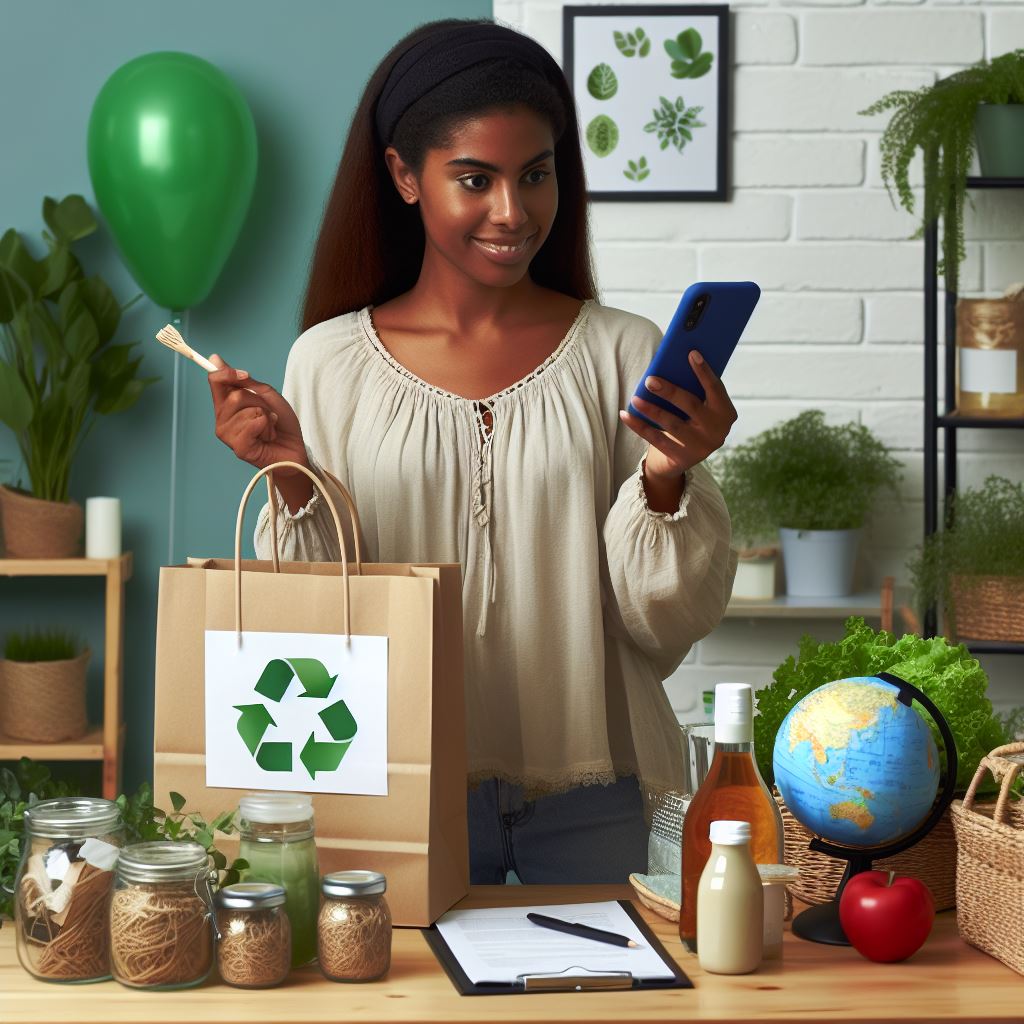Introduction
Buying eco-friendly products in the green marketplace is expanding rapidly, fueled by a surge in eco-conscious consumerism. More and more individuals are becoming aware of the environmental impact of their purchasing decisions and are seeking out products and services that align with their values. This shift is not just a passing trend but a profound change in the way we think about consumption and its effects on the planet.
Understanding what ‘eco-friendly’ really means is crucial in this context. The term refers to practices and products that are designed to have minimal negative impact on the environment. This encompasses everything from the sourcing of materials to the production process and the end-of-life disposal of the product3. Eco-friendly choices are those that contribute to the protection and preservation of the environment for future generations.
As consumers, it’s important to navigate the green marketplace with a critical eye, ensuring that the eco-friendly claims of products are genuine and backed by transparent and sustainable practices. By doing so, we can make a positive impact on the environment and support the movement towards a more sustainable future.
The Eco-Friendly Checklist: Making Informed Choices
When making eco-friendly choices, consider the following:
- Sustainable Materials: Opt for products made from sustainable resources like bamboo, organic cotton, or recycled materials. These materials are kinder to the environment as they are renewable, require less water and energy to produce, and are often biodegradable.
- Energy Efficiency: Choose products that are designed to conserve energy. This can include LED light bulbs, energy-efficient appliances, and solar-powered gadgets. Energy-efficient products help reduce your carbon footprint and can lead to significant savings on utility bills.
- Non-Toxic: Select products that are free from harmful chemicals and are biodegradable. Non-toxic products are safer for your health and the environment as they avoid contributing to pollution and toxicity in ecosystems.
The Lifecycle of Eco-Friendly Products
Assessing the sustainability of eco-friendly products involves examining their entire lifecycle, which includes:
- Production: The process should minimize environmental impact, using sustainable materials and energy-efficient methods.
- Use: The product should serve its purpose effectively without excessive resource consumption or pollution.
- Disposal: The end-of-life stage is crucial; products should be designed for recyclability or biodegradability to prevent waste.
The importance of a product’s end-of-life cannot be overstated. Recyclability ensures that materials can be reused, reducing the need for virgin resources and minimizing waste. Biodegradability allows products to break down naturally without harming the environment, contributing to a circular economy. Both aspects are essential for true sustainability and should be considered in the design and selection of eco-friendly products.
Certifications and Labels: Decoding the Eco-Speak
Recognizing Credible Eco-Friendly Certifications and What They Mean: Credible eco-friendly certifications are essential for consumers looking to make sustainable choices. These certifications, such as Fair Trade, Leaping Bunny, and OEKO-TEX, indicate that a product meets specific environmental and ethical standards. They often cover aspects like sustainable sourcing, manufacturing, and the final product’s impact. To ensure credibility, look for certifications that involve third-party audits and are widely recognized within the industry.
The Role of Third-Party Certifications in Verifying Claims: Buying eco-friendly products in the third-party certifications play a critical role in verifying the eco-friendly claims of products. They provide an independent assessment, separate from both the manufacturer and the certifying body, ensuring that the claims made are accurate and reliable. This adds a layer of trust and transparency, as consumers can be confident that certified products genuinely meet the sustainability criteria set by the certification programs.
The Impact Beyond the Label
When considering the broader impact of eco-friendly products, it’s essential to look beyond the label and evaluate the overall sustainability of the product.
Here are two key factors to consider:
- Zero Waste: Opting for products that adhere to a zero-waste philosophy is crucial. Zero waste is a holistic approach to resource management that aims to eliminate waste and promote sustainability. It encompasses the entire life cycle of products, processes, and systems, ensuring that all resources are reused, recycled, or composted to reduce waste sent to landfills and incinerators.
- Carbon Footprint: Assessing the full environmental impact of a product, including its transportation and packaging, is vital. The carbon footprint calculation should consider everything from the materials used and the production location to the types of manufacturing equipment and distribution methods. This comprehensive view helps in understanding the product’s true environmental cost and in making more informed decisions.

Practical Tips for Eco-Friendly Shopping
How to Spot Greenwashing: Greenwashing is when companies make false or misleading claims about the sustainability of their products or practices. To avoid it:
- Read Beyond Labels: Words like “natural” and “eco-friendly” are vague; look for specific details about sustainability.
- Check Certifications: Look for credible third-party certifications that verify eco-friendly claims.
- Beware of Vague Language: Be cautious of terms that sound green but lack concrete meaning, such as “all-natural” or “green” without clear definitions.
Making Authentic Eco-Friendly Purchases: To ensure your purchases are genuinely eco-friendly:
- Research Brands: Choose brands with a strong reputation for sustainability and ethical practices.
- Trustworthy Retailers: Shop from online marketplaces known for curating ethical and sustainable goods.
- Product Lifecycle: Consider the entire lifecycle of the product, from production to disposal, ensuring it aligns with eco-friendly principles.
The Significance of Reusable and Recyclable Materials: Using reusable and recyclable materials significantly reduces waste by:
- Conserving Resources: They minimize the need for raw materials, reducing the strain on natural resources.
- Saving Energy: Less energy is consumed in the production and transportation of new products.
- Reducing Landfill: They decrease the amount of waste sent to landfills and incinerators, promoting a circular economy.
Conclusion
Buying eco-friendly products embracing eco-friendly lifestyle products is not just a trend; it’s a commitment to the health of our planet and ourselves. As you navigate the green marketplace, remember to look for sustainable materials, energy efficiency, and non-toxicity. Understand the full lifecycle of products, from production to disposal, and seek out credible certifications that back up eco-friendly claims. Be mindful of the broader impact, including zero waste philosophies and carbon footprints. By equipping yourself with this knowledge and prioritizing authenticity over greenwashing, you can make informed choices that align with your values and contribute to a more sustainable world. Every eco-conscious purchase is a step towards a greener future, and together, our collective actions can lead to significant environmental change.
In conclusion, choosing eco-friendly lifestyle products involves considering factors like sustainability, material quality, and ethical production. Make informed choices and embrace a greener lifestyle with The Amrit Life.











